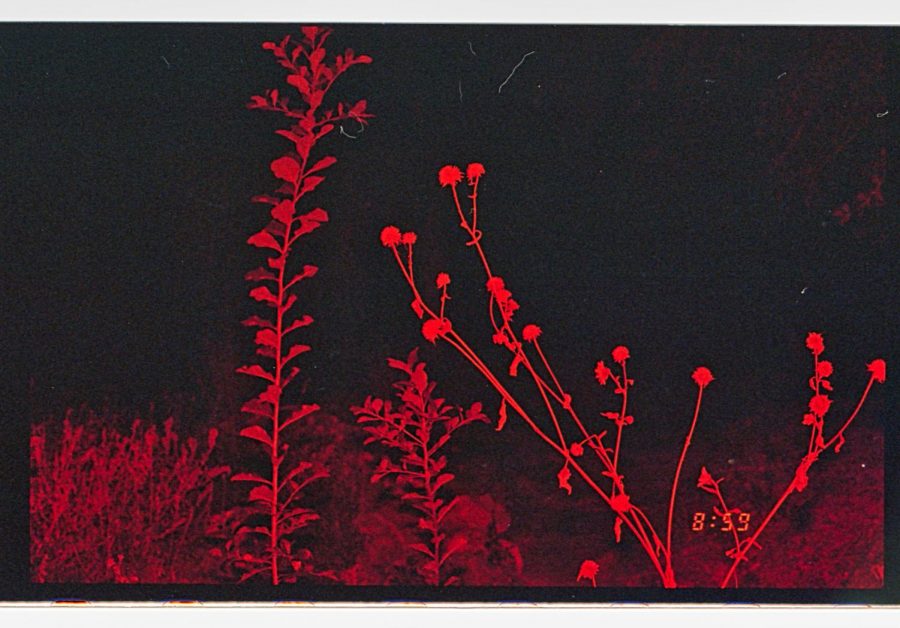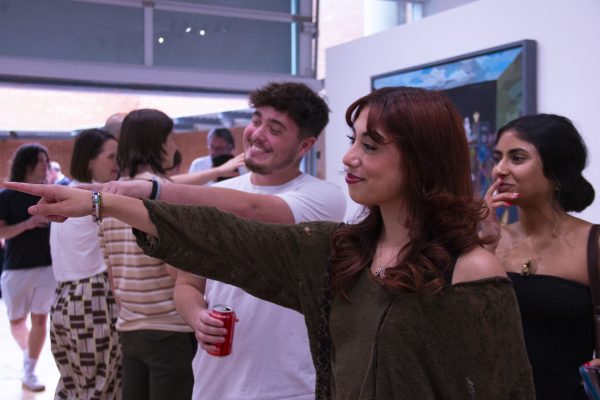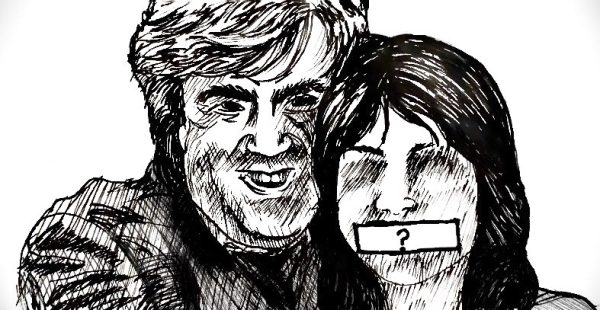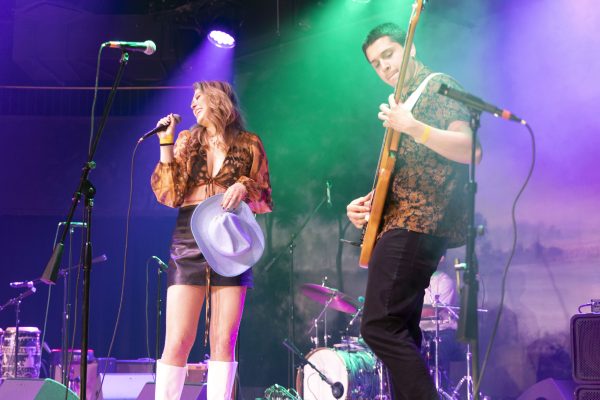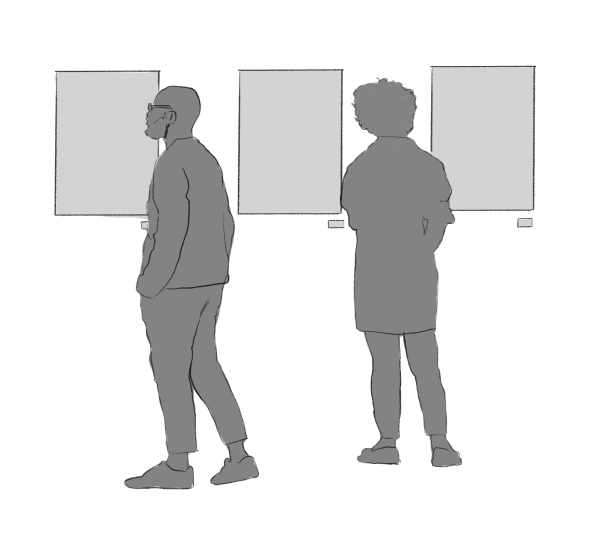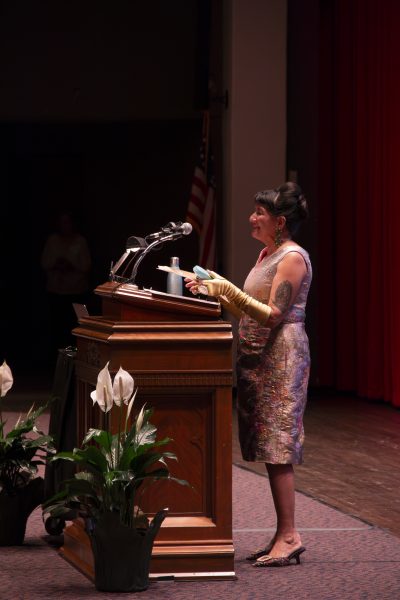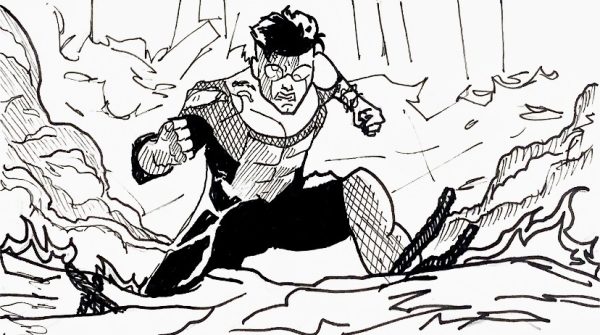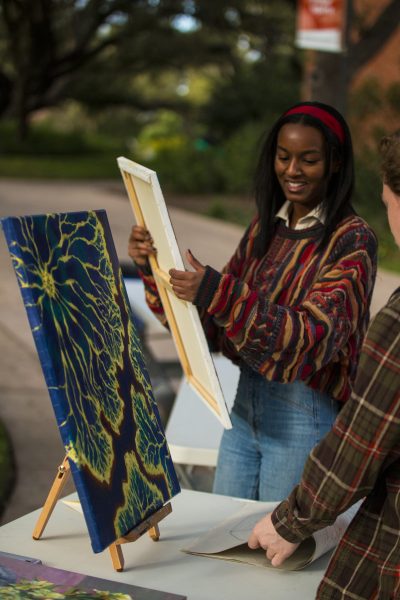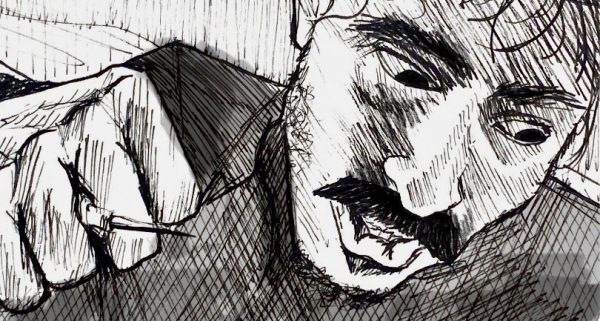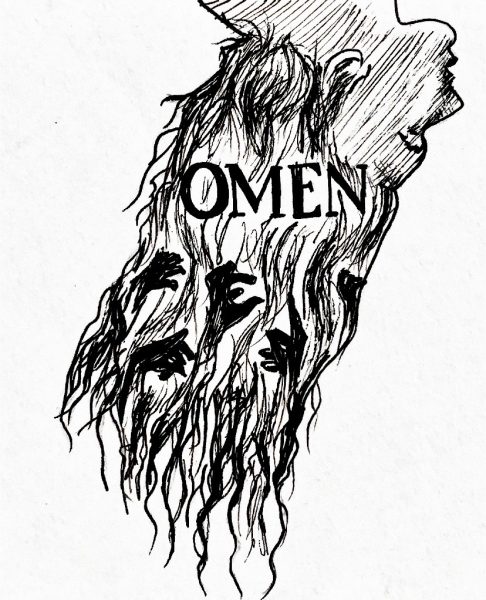Artist Spotlight: Current events through the lens of Charlie Morris
University professor’s photography project selected to be featured in Luxembourg exhibition
I sat down with Charlie Morris, mixed media artist and adjunct professor in the art and art history department, to talk about his recent work. Morris’s photography project, BLOODshotbloodSHOT, shot in San Antonio, was selected out of hundreds of international submissions to be included in the European Month of Photography. Over the summer, BLOODshotbloodSHOT was on display in the group exhibition “Re-Thinking Nature” in Luxembourg. In the coming months, the exhibition will be travelling to both Vienna and Lisbon, culminating in the FOTO WEIN festival.
Just as noteworthy is a six minute-long video that Morris shot in the Montrose neighborhood of Houston, titled “A Square is a Circle is a Rectangle.” The video, dealing with gentrification, has been selected to be included in Blue Star Contemporary’s collaborative exhibition with Darmstädter Sezession in a September screening show titled “Projection/Projektion.”
What main technical aspects and ideas influenced your photographs in your project BLOODshotbloodSHOT?
Photography and lens based work was the perfect medium to talk about the visible and the invisible — in relation to the virus, it’s very present, and it being sort of invisible, there’s this kind of anxiety and fear. I’m putting in front of the lens a red filter, and I’m shooting color film. These photographs are taken on my daily evening walks that have been part of my practice for several years. A lot of this project was from 2020 to early 2021 when the pandemic was at its worst. We were under curfew. It was pretty frightening. I was interested in the idea of forensic photography as sort of getting almost a feeling of objective, harsh light on this new landscape, and what I’m talking about is the idea that I’m illuminating. I’m using the color red as a metaphor to illuminate this invisible virus, so we know that when you look at the photographs, that’s not a natural color. It’s an unnatural sort of blanket of color in the landscape, and in a way, it’s a metaphor for the virus as it’s invisible, and so that was kind of the connection between those two things.
How did you come up with the title BLOODshotbloodSHOT?
I like the idea of a title sort of referencing the project itself as shooting the film, shooting out into space with the camera, so there’s this shot. There’s also this level of violence with the color red, which we associate with blood. So many things were coming into this whole idea of the virus. It wasn’t just the virus, it was violence. It was civil unrest, inequalities in the street. It was just a nightmare, really, so I guess the title is about thinking about mortality, thinking about fear, and of course, the color as a blanket of artificial color. It clouds even when I’m free to walk for an hour and I’m shooting, but I still feel like I’m in prison in some ways because we’ve got to go back home, you know. I guess this color, this hue in our environment, it’s still with us. Many say even more seriously now, especially in a global context, so there’s a sense of dread. Looking at the world differently now, everything’s changed, just turned a corner like that. You know, and this idea of separation between people and communication, all that just broke. It was a difficult time and still is, but we need to carry on still, all the while knowing that there’s something that you can’t see that is still very real and very there.
I understand your video, “A Square is a Circle is a Rectangle,” will be on display at both Blue Star Contemporary San Antonio and Darmstädter Sezession in Darmstadt, Germany in September as part of the collaborative “Projection/Projektion” screening competition and exhibition. What led you to create this particular video?
It’s about gentrification. It’s about construction and destruction of a neighborhood. More specifically, the old homes in Montrose in Houston. Obscene money can come in and say “I hate that beautiful 1920s house” and just destroy it. Because there are no zoning laws there, they can just throw something down, and then they’ll build this hideous fabricated sort of loft for millions of dollars, so it pushes everybody out, right? It pushes everybody out, and it changes the neighborhood through some sense of what I would say is violence. I see it that way. It’s very minimal, simple. There’s a few screenings down on Mission Drive which was an old outdoor drive in where you sit in your car. I’m super excited about it, and again, it’s the perfect project now to be outside. We can share our work still and still connect with the community.
Any last thoughts?
What I love about being an artist is there’s freedom to do what you want. My zines allow me a space where I don’t have to ask for permission. There’s a lot of freedom in that. I’m hoping that there’s something we can pull out of it [the pandemic] to keep moving as artists, to still be in this kind of dialogue with the world and each other. It’s never a substitute, and I’m glad to be back in the studio. A lot of my students want to work collaboratively today. They’re, like, yearning for connection. I’m very hopeful with this next generation coming up. They have something very in common now. Hopefully, everyone will come together and rise up.
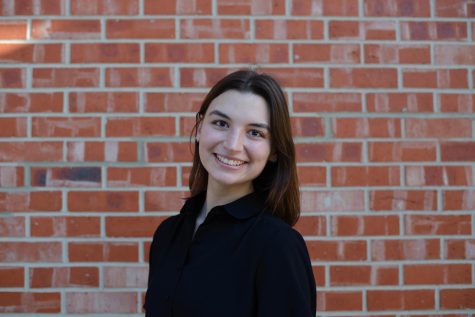
My name is Ashley Allen and I am a senior completing a BA in art history at Trinity University, with a minor in Medieval and renaissance Studies. I hope...

